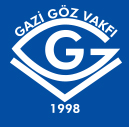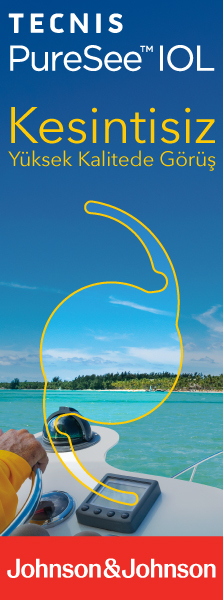Retina-Vitreous
2010 , Vol 18 , Num 3
Ocular and Systemic Complications of Intravitreal Injections
1Beyoğlu Göz Eğitim ve Araştırma Hastanesi, 2 Göz Kliniği, İstanbul, Uzm. Dr.2Beyoğlu Göz Eğitim ve Araştırma Hastanesi, 2 Göz Kliniği, İstanbul, Doç. Dr.
3Beyoğlu Göz Eğitim ve Araştırma Hastanesi, 2 Göz Kliniği, İstanbul, Asist. Dr. Purpose: To determine ocular and systemic complications of intravitreal injections.
Materials and Methods: Four hundred and two eyes from 352 patients, who underwent intravitreal injections for various ocular pathologies between January 2006 and February 2010, were evaluated retrospectively.
Results: The average age of 352 patients was 67±10. Three hundred and thirty five triamcinolone acetonide (TA) injections were given to 260 eyes, 418 antivascular epithelial growth factor (anti-VEGF) injections were given to 142 eyes,totaly 753 intravitreal injections were performed. The average follow-up was 26 months in the TA group and 9.8 months in the anti-VEGF group. Intraocular pressure elevation was detected in 154 (59%) patients of the TA group in the first week while a significant increase of IOP was not observed in the anti-VEGF group. New cataract formation or cataract progression were observed in 66 (25.3%) eyes of the TA group and 1 (0.7%) eye of the anti-VEGF group. We encountered 2 cases of endophtalmitis, one (0.3%) of them from the TA group, the other (0.7%) from the anti- VEGF group. Pseudohypopyon was detected in 4(1.5%) eyes after intravitreal TA injection. We observed an epithelial defect in 1 (0.7%) eye, intravitreal hemorrhage in 1(%0.7) eye and two (1.4%) patients complained about having flashing lights in the anti-VEGF group. No systemic complication was observed in any patient.
Conclusion: Endophthalmitis, which is one of the most feared complication of intravitreal injections,occured after TA and anti-VEGF injections at similar rates. However, increased IOP, cataract formation and pseudoendophtalmitis were more common complications after TA injection. Keywords : Intravitreal injection, triamcinolone acetonide, antivascular epithelial growth factor





